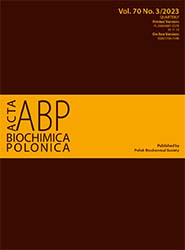Recent studies on non-invasive biomarkers useful in biliary atresia – a literature review
Abstract
The aim of this review is to specify new potential reliable and non-invasive methods for the diagnosis of biliary atresia (BA) that could shorten the way to diagnose BA, and finally the surgical treatment. Apart from the biomarkers that have been proven helpful and are used nowadays in neonatal wards, there are several new potential biomarkers that researchers have found to be helpful in the diagnosis of biliary atresia. Circulating microRNAs, matrix metalloproteinase-7, stool proteins, interleukin-33, Th17-associated cytokines, urinary metabolomics, anti-smooth muscle antibodies, heat shock proteins 90 and positive biliary epithelial cells CD56 are among those presented in this summary. These markers may play a new significant role in BA diagnosis. The described methods include Nomogram, Circulating microRNAs (miRNAs), Matrix metalloproteinase-7 (MMP-7), Stool proteins, Interleukin-33 (IL-33), Th17-associated cytokines, Alpha-aminoadipic acid and N-acetyl-d-mannosamine in urine, Anti-smooth muscle antibodies (ASMA), Heat shock proteins 90 (HSP90), Positive biliary epithelial cells CD56.
Copyright (c) 2023 Anna Lew-Tusk, Marta Pęksa, Teresa Stachowicz-Stencel

This work is licensed under a Creative Commons Attribution 4.0 International License.
Acta Biochimica Polonica is an OpenAccess quarterly and publishes four issues a year. All contents are distributed under the Creative Commons Attribution-ShareAlike 4.0 International (CC BY 4.0) license. Everybody may use the content following terms: Attribution — You must give appropriate credit, provide a link to the license, and indicate if changes were made. You may do so in any reasonable manner, but not in any way that suggests the licensor endorses you or your use.
Copyright for all published papers © stays with the authors.
Copyright for the journal: © Polish Biochemical Society.


